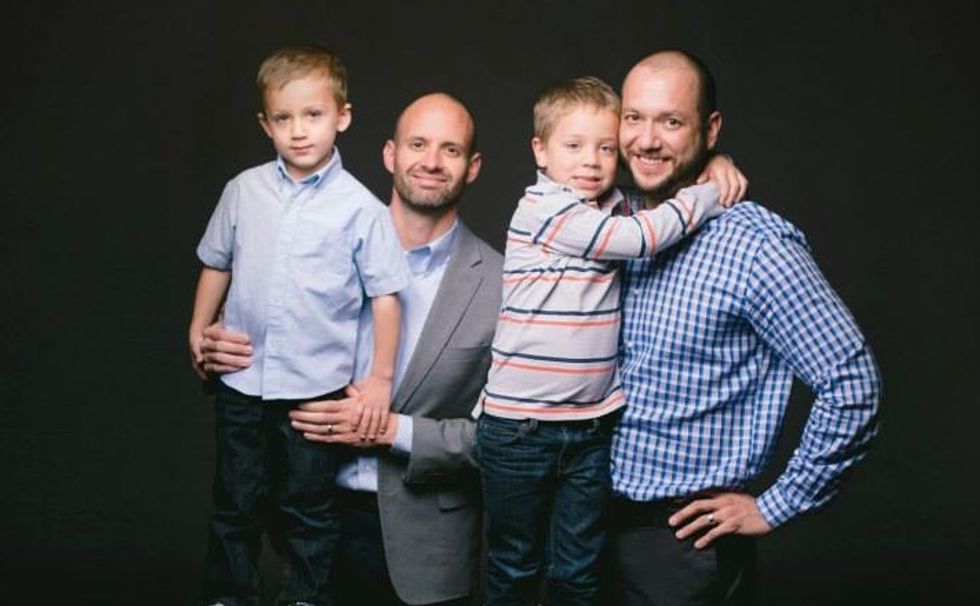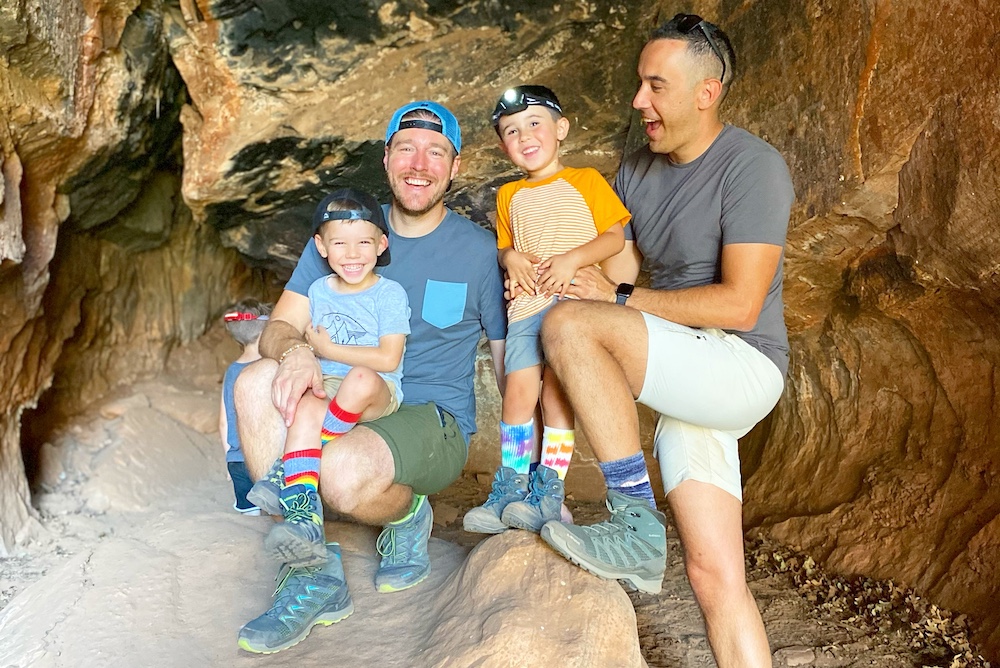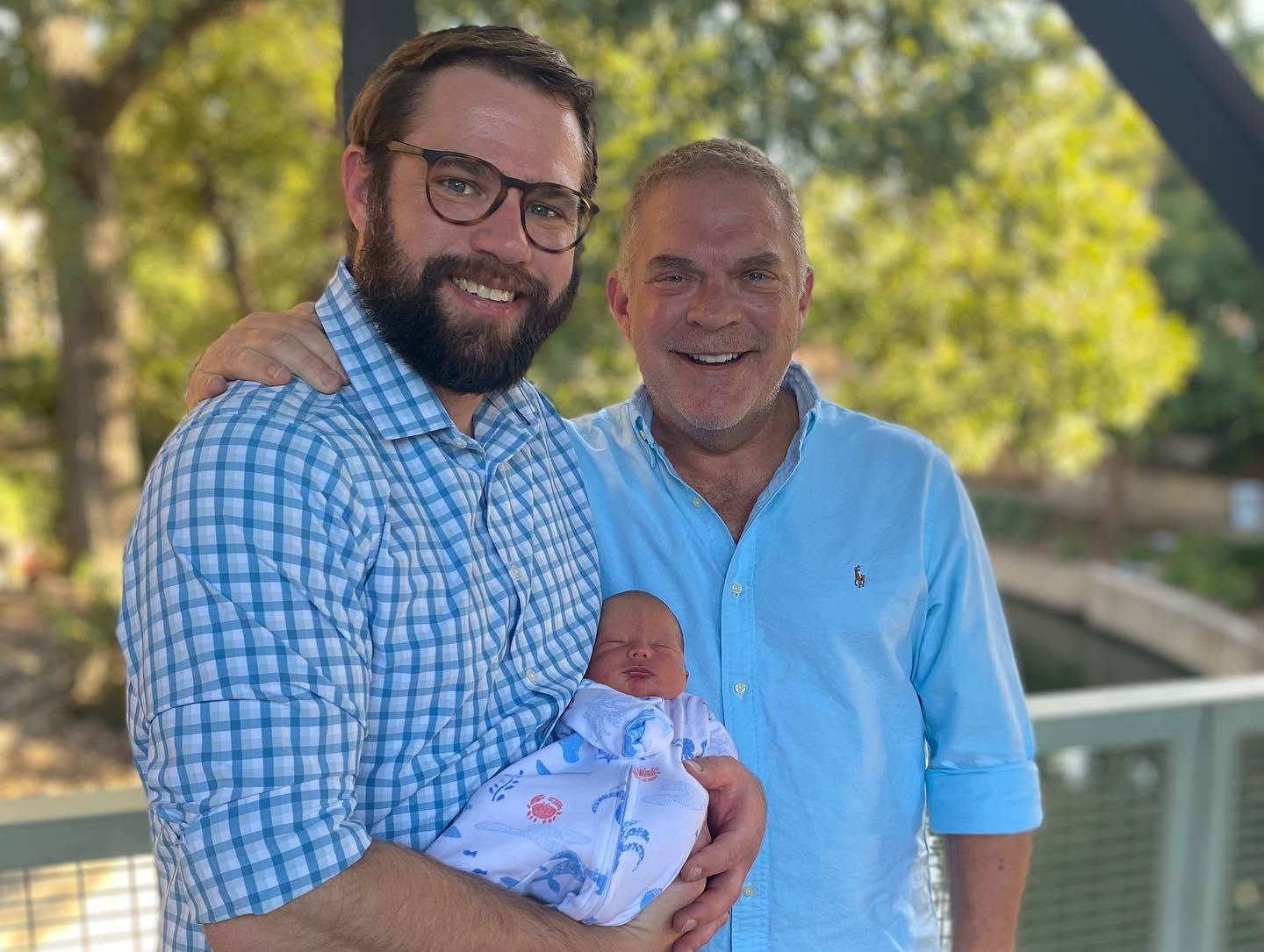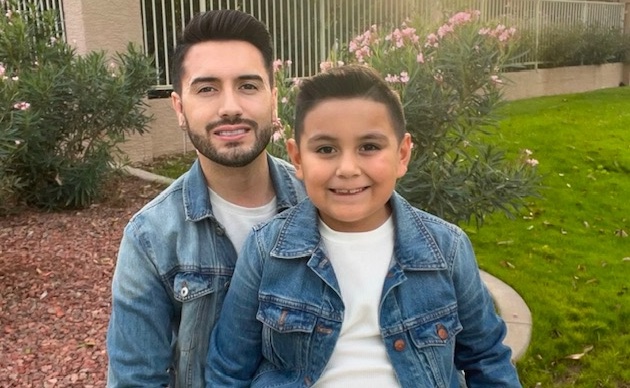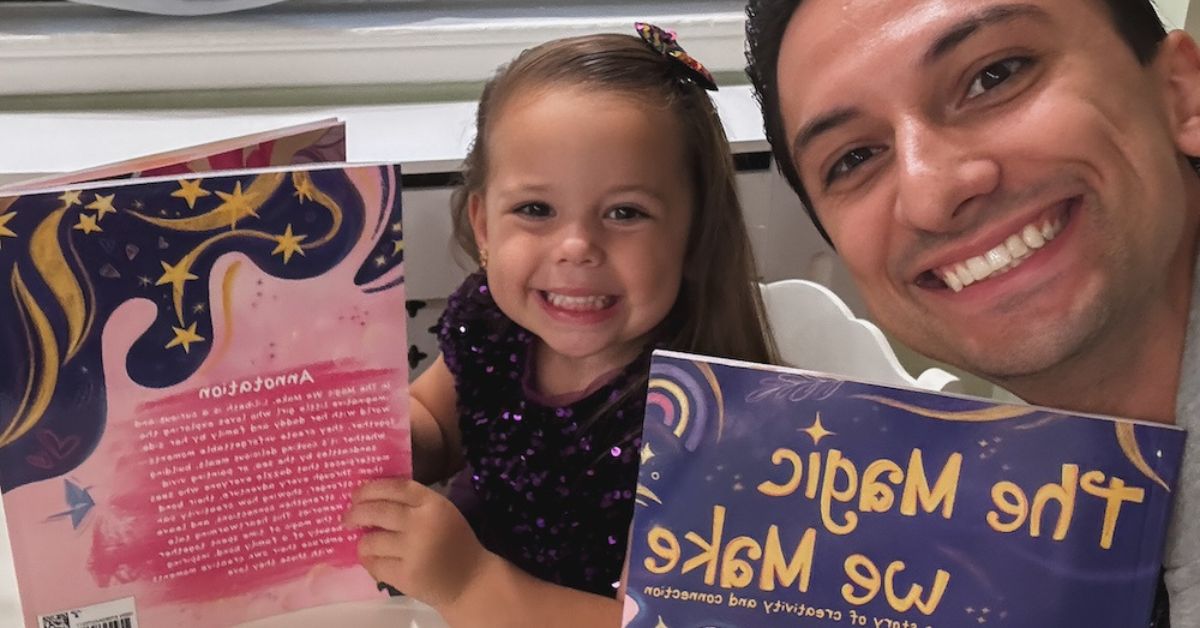Photo Credit: David Newkirk Photography
Wow, what an exciting couple of weeks for the LGBT community, right? First, President Obama issued a proclamation making June the country’s official LGBT pride month. Then Caitlyn Jenner became the first trans woman to grace the cover of Vanity Fair. And just a week ago or so, New York City conferred city landmark status on the Stonewall Inn, home of the 1969 riots that helped spark the modern LGBT rights movement.
Feels like I’m missing something … Oh right, pro wrestler “Money” Matt Cage finally came out of the closet! So much progress in just a couple of weeks, it’s really remarkable to see how far we’ve come as a community.
I guess it might also be worth mentioning the decision in that little Supreme Court case, Obergefell v. Hodges, which just legalized same-sex marriage in every state in the country. I can’t speak to the rest of the country, but here in New York City, this victory lent an extra layer of gaiety to our Pride events this year. Marchers walked the parade with an extra bounce in their steps and the drag queens’ heels seemed particularly high.
In the coming days and weeks, we’ll wipe the glitter from our eyes and get back to our jobs and lives. And soon, we’ll think back on the days before the Hodges decision, incredulous that there ever used to be a time in this country where LGBT couples weren’t granted full marriage rights.
But before this decision is relegated to the history books, I wish to take a moment to highlight the stories of two of the people who helped bring us this victory by serving as plaintiffs in court cases like Hodges across the country. Because, as time passes, it will be easy to forget that for every victory and setback we’ve experienced in the courts on the way to this victory, there have been actual LGBT people and families at the center of these cases. These are people who have lent their stories to the cause of equal marriage, and whose families, as a result, are thrust into the often harsh lights of the media and judged in the court of public opinion.
* * *
While in third grade, Tony Milner’s teacher asked his class to draw a picture of what they wanted to be when they grew up. Walking around the room, she saw drawings of basketball players, astronauts, and firemen; pretty standard fare for the hopes and dreams of 8- and 9-year-old boys. But when she got to Tony’s picture, all she saw was a picture of a man with a mustache.
When his teacher asked what profession the drawing represented, Tony explained, “I want to be a father when I grow up!”
“My mother still laughs about this,” Tony told me when we spoke by phone recently. “I’ve always wanted to be a father.”
But when Tony, now 35, first started dating, he began to think fatherhood might prove too difficult for him as a gay man. “I was meeting guys who had no intention to settle down or have kids,” Tony explained. “I remember thinking, Oh, well this clearly isn’t going to happen.”
But then one day in 2003, Tony (photo above, second from left) attended a swanky hotel party in downtown Salt Lake City, where he was feeling a bit out of place. Fortunately for him, there was another partygoer at this event feeling equally awkward.
“The party was for a bunch of very high fashion hairdresser types,” Matt Barraza, 39, told me. “We stuck out like sore thumbs, so we gravitated towards each other.”
As the pair got to know one another, they soon found they had more in common than a sense of awkwardness at fancy hairdresser parties. Both were originally from Utah, for instance, and had grown up in the Mormon Church, but were no longer active members.
“But the big thing that drew me to Matt is that he wanted to settle down and have a family,” Tony said. “This was 12 years ago, so it was even more uncommon then for gays to have kids.”
“Especially in Utah,” Matt added, in reference to state laws that complicated the path to parenthood for LGBT people.
In 1998, the Utah legislature passed a bill that required adoption agencies to give preference to married couples over single individuals. The law also prohibited unmarried cohabitating adults from adopting. And in 2004, Utah was one of 11 states to pass a constitutional amendment defining marriage as between one man and one woman.
Back at the swanky hotel party, Matt and Tony weren’t yet thinking about these complications. Instead, Matt (photo above, right) asked Tony for his number. The two left that night suspecting they might have met a match. Their suspicions were right, as it turns out: Matt and Tony have been in a relationship practically ever since that first night. What they had no way of knowing at the time, however, was the role this relationship would play, a decade later, in seeking to validate the marriages and families of LGBT couples in Utah.
The Legal Stranger
Matt and Tony’s lives progressed like those of many young couples. They bought a house in Salt Lake City and advanced in their careers. Tony was promoted to be the executive director of Family Promise, a local homeless shelter in Salt Lake City, and Matt continued his successful work as a public defender. (Nothing like a happy do-gooder couple to make you question your own life decisions, am I right?)
“Things were starting to come together,” Matt said, “so the timing for a family felt right.”
Before making any further moves towards fatherhood, however, it was important to the couple that they get married first. So in 2007, five years after they first met, the couple held a small ceremony at their church, the Holladay United Church of Christ, and asked their pastor, Erin Gilmore, to officiate.
“Well, it wasn’t a marriage,” Matt clarified, “it was a commitment ceremony, since gay marriage wasn’t legal yet.”
Legal or not, the ceremony was an important way for the couple to celebrate their commitment to one another, in front of friends and family. However, some of their family members, active members of the Mormon Church, were ambivalent, at best, about their union. Rather than hide from the tension in the room during the ceremony, the couple decided to address it head on, with the help of their officiator.
“She called them out,” Tony said with a little laugh. “She said, ‘Some of you might not approve of this union, but [Matt and Tony] are here to demonstrate before you their commitment together.’” The couple also purposely invited children to their ceremony. “We wanted it to be a celebration of family,” Tony explained.
Once married, the couple started researching various routes to fatherhood and decided on adoption. “We figured we’d have to start saving tens of thousands of dollars to adopt a kid overseas,” Matt said. But instead, a family that had passed through Tony’s shelter several years prior presented the newlyweds with a unique opportunity.
Tony had stayed in touch with the family, even after they had moved out of the shelter and into a permanent home. “They would drop by the office and say hi sometimes,” Tony said of the family. “We just made a great connection with them.” The family also knew the couple hoped to become fathers one day. So when they learned they were expecting a child, they approached Matt and Tony about adopting him.
“They just said ‘We can’t do this,’” Tony said, noting the family was already living in a two-bedroom house with six children. “They had fallen on hard times and were just starting to get back on their feet when they learned they were pregnant,” he continued. Given their history, moreover, the families managed to conduct the adoption without the involvement of the state, any exchange of money or a formal written agreement.
“[The birth mother] made the switch early on in the pregnancy that this was Matt and Tony’s child,” Tony said. “It really helped the situation.” And so, in 2009, Matt and Tony welcomed their son Jesse (photo above, second from right) into their family.
Though they couldn’t have asked for a more seamless adoption process, Matt and Tony still faced a difficult decision. With same-sex marriage illegal in Utah and the adoption ban on unmarried couples still in place, only one of them could adopt the baby and be his legal father; the other would have no rights.
“I had the better health insurance,” Matt said with a sigh. “So that was the decider.”
Their lawyer didn’t mince words when it came to helping the couple understand what it meant for Tony to be the non-adoptive father. “‘If you ever want to ruin your day, talk to a family lawyer about your rights,’” Tony quoted her as saying. “She said I’d be nothing more than a legal stranger. I kept thinking, That would be a good name for a band.”
As a legal stranger, his lawyer explained, Tony would need to have a consent form filled out in order to pick his own son up from daycare. He wouldn’t be able to make medical decisions for Jesse either. If he and Matt were to separate, or something were to happen to Matt, Tony would have no legal rights to his son whatsoever; no ability to petition for legal custody or even for visitation rights.
“It wasn’t easy for Tony to know he wasn’t legally recognized if anything should happen,” Matt acknowledged. But the laws being what they were in Utah at the time, their hands were tied.
Matt and Tony had heard that some gay and lesbian couples in similar positions had gone to great lengths to gain legal rights for the second parent. “There are all kinds of hoops people would jump through to get the other person [legal status],” Matt said. He had heard of couples setting up a second residency in another state that recognized same-sex marriage in order to complete the second-parent adoption process, for instance. Matt and Tony, though, didn’t have the means for this.
So, with no other option, Matt and Tony got on with their lives, entrenched in the happy chaos familiar to any new parents. And life, for the most part, was good. “We had a great relationship, our adoption went really well, Jesse is happy and healthy…” Tony said, counting his blessings. Still, Tony’s status as a legal stranger to his son hung over the family’s head, putting a little asterisk next to their happiness.
“But then last year,” Matt said ominously, “everything changed.”
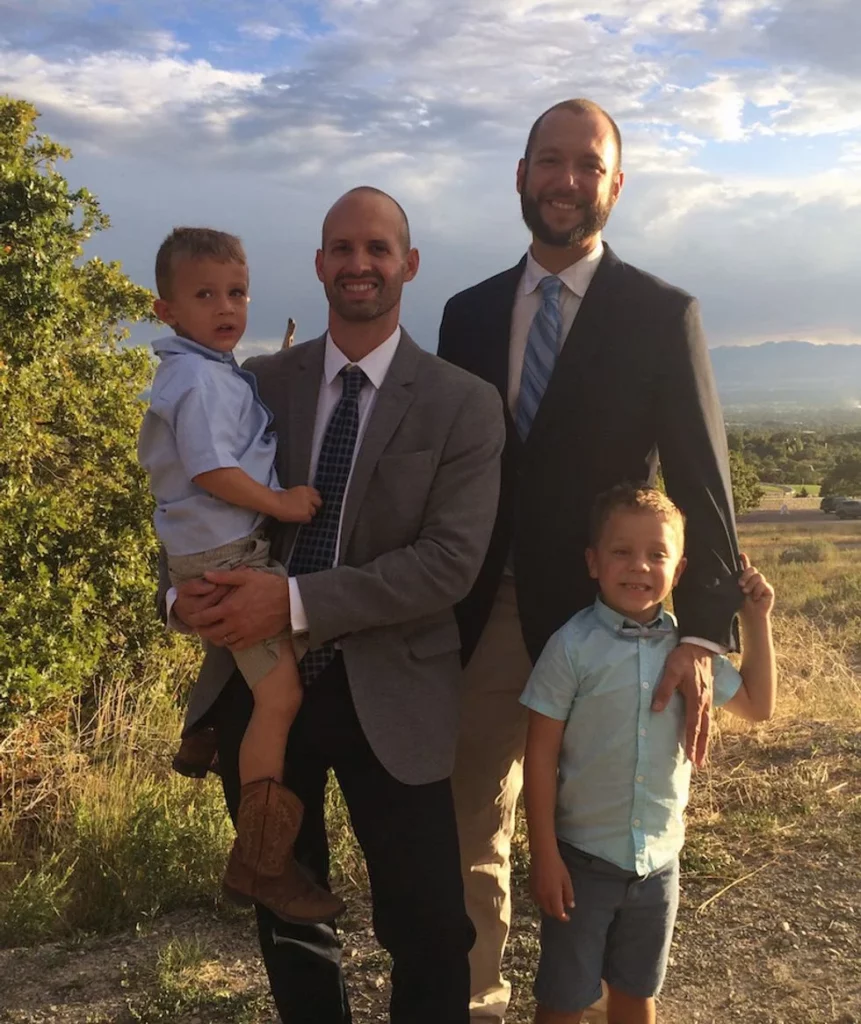
Awaking the Papa Bear Instinct
On December 20, 2013, Matt was out doing some last-minute Christmas shopping when he heard some incredible and unexpected news: U.S. District Judge Robert J. Shelby in the case Kitchen v. Herbert had found Utah’s ban on gay marriage unconstitutional.
Matt wasted no time.
“I called Tony up, and said, ‘Come on, we’re going to get married!’” Matt said, still sounding a bit surprised by this turn of events. The couple picked up Jesse and went straight to the county clerk. They handed over $25, each signed on the dotted line, and, just like that, they were husband and husband.
“Well,” Matt said, “Tony was the bride.” With the ruling just minutes old at this point, the forms hadn’t been changed yet!
Matt and Tony couldn’t believe their luck. Utah, one of the most socially conservative states in the country, had just become the 18th state to legalize same-sex marriage. While the moment of the occasion wasn’t lost on the couple, they were most interested in what this victory meant for them, practically; now that they were a legally married couple, Utah’s 1998 adoption ban on unmarried couples no longer applied to them.
Moreover, particularly as a lawyer, Matt knew there would likely be a lengthy appeals process, and the legality of their marriage could be drawn into question at any time. “We didn’t know how big our window was, so we began the second-parent adoption process as soon as we could.”
“It’s funny,” Tony said, as a quick aside, “after getting our certificate, everyone kept asking us, ‘Aren’t you going to celebrate?’ We were like, ‘Um, we have a kid. It’s bath time and story time. That’s what we’re doing.’” And with the couple’s second-parent adoption process still looming, they may not have been in the champagne-popping mood just yet.
However, members of their church took it upon themselves to mark the occasion with a surprise for the newlyweds. During the sermon that Sunday, the pastor brought up Judge Shelby’s ruling. “Things are changing for people in Utah!” Tony recalled the pastor saying, before he displayed a photo of the couple, Jesse in arms, up on the large screen.
The congregation rose to their feet, erupting in applause.
“If you would have told my little 15-year-old suburban self that I might one day get a standing ovation from my church for making my relationship legal,” Tony said reflectively, “I wouldn’t have believed you. It was amazing, and great to see the support.”
Unfortunately, just as the couple had suspected, the celebration was short-lived. On January 6, 2014, just a few days before Tony’s court date to legalize his adoption of Jesse, the Utah Supreme Court stayed Judge Shelby’s ruling, pending a ruling by the 10th Circuit Court of Appeals in Denver. Soon after, Utah governor Gary Herbert and attorney general Sean Reyes both stated they would not recognize the roughly 1,200 marriages granted to same-sex couples in Utah before the Supreme Court’s stay.
With the legality of Matt and Tony’s marriage in question, so, too was Tony’s adoption of Jesse. “It was devastating,” Matt said.
Soon after, the couple heard the ACLU had been putting out feelers for plaintiffs to include in a lawsuit against the state in an effort to ensure the marriages were recognized.
“Honestly,” Matt said, “if this were just about me and Tony, I don’t think we ever would have joined the lawsuit. But our kid was involved. They were trying to stop the adoption from taking place we’d been waiting for so long. The Papa Bear instincts kicked in.”
So, the two Papa Bears, with little more than Jesse on their minds, soon found themselves at the very center of the gay marriage debate in Utah in the form of the lawsuit Evans v. Utah.
Private Papas Turned “Public Figures”
I am also from Salt Lake City. (And, for full disclosure, have known Matt Barraza for many years.) So I had a particular interest in the events unfolding in the state on December 20, 2013, the day Judge Shelby overturned the marriage ban. I was glued to the news that day, picking out people I knew in the droves of same-sex couples that were arriving for their chance to get married. Cameras flashed and crowds cheered every time a newlywed couple emerged from the courthouse triumphantly, certificate in hand. It was quite the scene.
“Yeah, we missed most of the frenzy,” Matt laughed, who estimates he and Tony were the second or third same-sex couple to receive a marriage license that day. “There was no line, no crowds or media,” Matt said of when they got there. “So we just walked in, paid our $25, they handed us our certificate, and that was that. It wasn’t until that night while we were watching the news that we appreciated what was going on.”
While they missed the craziness of that first day, however, the couple would soon find the media circus blowing up its tent practically at their front door.
When the couple first joined the ACLU lawsuit as plaintiffs they just thought their names would go in some court documents. They soon learned, though, that their involvement would extend well past court documents.
Early on, the couple was invited to attend a press conference organized by the ACLU to announce the lawsuit. The room was filled to capacity with reporters clamoring for answers; cameras were flashing. “It was a little bit overwhelming,” Matt said, “especially since we had Jesse with us, and he was only 5 at the time.”
Caught off guard by the media’s interest in their story, the couple had to regroup to discuss how to handle any future media exposure, particularly as it related to Jesse. In the end they decided they wanted the public to see the face of their child; they wanted people to know that this was an issue affecting many children and families throughout the state.
Meanwhile, the marriage cases began to wind their way through the courts. On May 19, 2014, Judge Dale A. Kimball ordered Utah to recognize the roughly 1,200 marriages of same-sex couples that had occurred in the state, including Matt and Tony’s, over the governor’s and attorney general’s opposition. The state, however, appealed the decision a month later. Then, on June 25, 2014, the 10th Circuit Court of Appeals dealt LGBT advocates another major victory by upholding Judge Shelby’s original ruling. The 10th Circuit, however, stayed its ruling pending review by the Supreme Court.
“It was a lot more emotional than I thought it would be, all of these ups and downs,” Matt said of the cases. “There were a lot of highs and lows, and the decisions seemed to take forever. It was gut-wrenching.”
And, while the couple waited for the various rulings, they endured the ongoing media interest in their story as plaintiffs in Evans v. Utah. Reporters called for comment, the couple gave interviews, the family posed for photographs. Matt and Tony hadn’t expected all the media exposure, but, for the most part, were happy to lend their story to the cause. Doing so, however, sometimes garnered them unwelcome attention.
On September 18, 2014, an anti-LGBT group called Celebration of Marriage organized a rally at the state capital in opposition to same-sex marriage. As a part of the rally, the organization’s founder, Mary Summerhays, displayed a slideshow that included photos of several same-sex parents and their children. One was a photo of Matt and Tony, holding their son Jesse.
“This child has a mother,” Summerhays reportedly said during the rally, adding that Jesse represented the “children who will pay the price of redefining marriage.”
Matt and Tony learned that the opposition had used their son’s image at the rally only when a reporter from The Salt Lake Tribune called them for comment.
“It was so disgusting,” Matt said of having their child at the center of this rally. “It was by far the lowest point of the whole process.”
“Attack us, the adults, all you want,” Tony agreed, “but you don’t condemn innocent little children. You don’t know us, or anything about us. Why do this to our family?”
Fortunately, Matt and Tony were not the only ones expressing incredulity. Summerhays received flak from a number of LGBT advocates for using these photos without permission and was even the subject of a Salt Lake Tribune article questioning her ethics. In that article, Summerhays defended the use of Jesse’s image at her rally, claiming Matt and Tony represented public figures.
“No, you crazy hate lady,” Tony said with a laugh, “we’re not public figures. We’re not celebrities. We’re not actively seeking recognition or our name in the paper. All we’re trying to do is fight for our son, and for the equal opportunities and protections of marriage.”
Return to Normalcy
On October 6, 2014, the U.S. Supreme Court refused to hear an appeal of the 10th Circuit Court’s decision that found Utah’s ban on same-sex marriage unconstitutional. That refusal to hear their case meant that not only could same-sex couples in Utah now marry, but also couples in the other states covered by the 10th Circuit Court, i.e., Colorado, Kansas, Oklahoma, and Wyoming. (New Mexico, also part of the 10th Circuit, already allowed same-sex marriage.) It was a decision that surprised many legal observers and even upset some LGBT advocates who hoped the case would be the one to settle the constitutionality of same-sex marriage nationally.
But for Matt and Tony, this was unequivocally good news. Finally, after months of waiting, their marriage was officially legal. They were able to proceed with the second-parent adoption process.
“Relieved,” Tony said, when I asked him to describe how he felt in a word, now that he had legal parental rights.
“Relief” certainly made sense, after everything the family had been through. But, I wondered, was “proud” a close second, given their role in helping bring about marriage equality in Utah?
Matt and Tony took a moment to consider the question. “I don’t know if I was feeling altruistic when we joined the lawsuit,” Tony admitted. “It was very much about our son, and making sure he was safe and secure and had the best future that he could.”
The couple, of course, is happy the situation worked out in their favor. But they rather modestly shrug off being labeled as activists or as leaders in the LGBT movement. “We’re just regular folks trying to get on with our lives,” Tony said. “We’re just trying to raise our family and protect our son, just like any other family.”
With the case finally behind them, the couple is now putting their energy towards enjoying their family, rather than defending it. It’s a family, moreover, that the couple hopes to grow soon. “2014 went down as a big year for our family,” Tony explained. The same year Matt and Tony were plaintiffs in the ACLU lawsuit, they also welcomed a foster son, Micah, into their home. But with everything else going on in their lives last year, I wondered, wasn’t this new development an unnecessary complication?
“I thought it would be more stressful to have two kids,” Tony said. “But I actually now feel like a better parent. I’m more patient, calm and supportive with two for some reason, even with a 5-year-old and 4–year-old fist-fighting in the living room over a Lego.”
Micah has since been reunited with his birth mother, but the couple has put out the word that they’d love to adopt another child sometime soon.
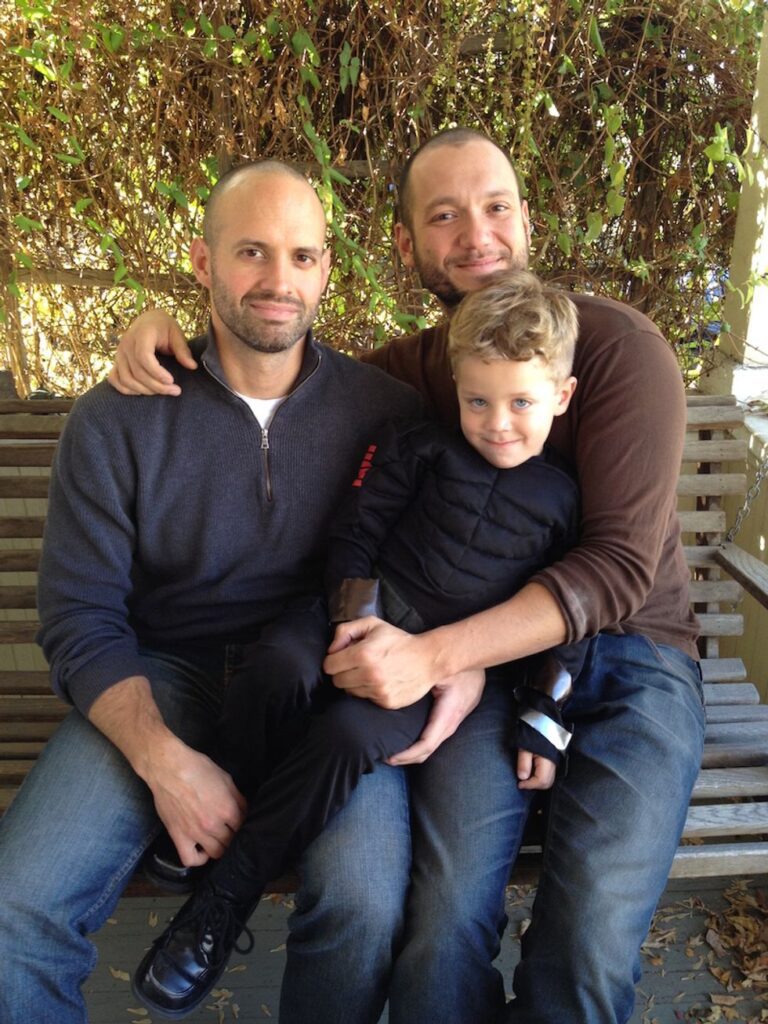
* * *
“Remember back when the Pride parade in Salt Lake City was very small and not well attended?” Tony asked, towards the end of our conversation.
It has been 12 years since I last lived in Salt Lake City. So I asked Matt and Tony to describe how things had changed for LGBT people since I’d abandoned my hometown for the bluer, gayer streets of New York City.
Back then, Tony reminded me, the parade always consisted of the same three groups: Dykes on Bikes; LGBT therapy and support groups; and drag queens and go-go boys promoting the local clubs.
These days Salt Lake City’s Pride event draws over 35,000 participants; categories have expanded dramatically and sometimes comically. “There’s the gay PETA group, and the gay gun group, and the gay rodeo group,” Tony said. “And now, there’s even gay fathers.”
“Yeah, it’s like there’s finally room for us boring parents here,” Matt laughed. “We can celebrate heteronormativity as part of our diversity.”
And it is in large part thanks to boring heteronormative couples such as Matt and Tony, bravely allowing their families to serve as judicial fodder in court cases across the country, that marriage equality is now the law of the land.

